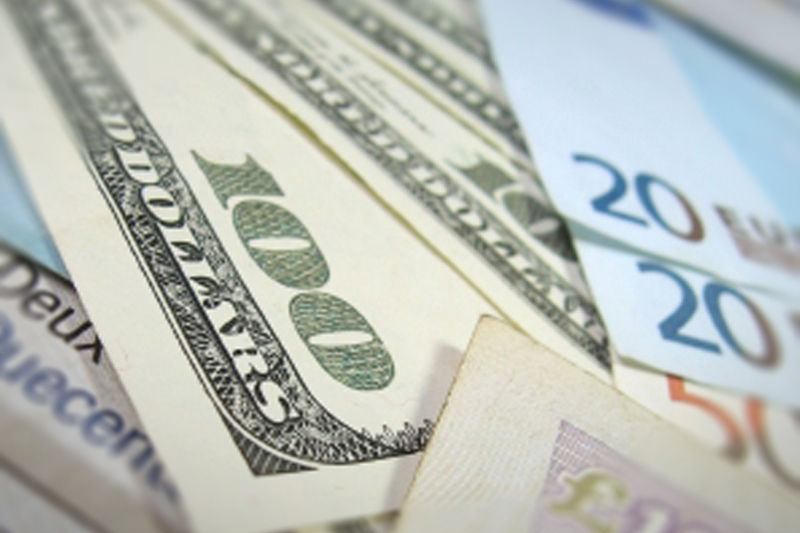Investing.com -- EUR/USD crashed below 1.12 on Friday capping a frenetic week of fluctuations, after market-moving comments from an influential member of the Federal Reserve on the increasing possibility of a September interest rate hike pushed the dollar broadly higher.
The currency pair wavered between 1.157 and 1.1310 on Friday before settling at 1.1187, up 0.0058 or 0.52% on the session. Over the last five days of trading, EUR/USD experienced one of its most volatile weeks of the year trading between a range of 1.11 and 1.17. After surging by more than 2% in Monday's session, the euro has fallen against the dollar in four consecutive sessions. For the week, EUR/USD closed lower by approximately 1.75%.
EUR/USD likely gained support at 1.1015, the low from August 18 and was met with resistance at 1.1713, the high from Aug. 24.
Speaking exclusively with CNBC, Fed vice chairman Stanley Fischer indicated that recent U.S. economic data had been impressive providing a compelling argument for short-term rates to head in a higher direction. Without explicitly stating that the U.S. central bank will raise its benchmark Federal Funds Rate next month, Fischer said the Fed could not wait for the case to be "overwhelming" before hiking rates above its current level of zero to 0.25%. Fischer also indicated that temporary headwinds that have caused recent volatility in global markets could recede quickly.
Currency traders await a panel discussion by several influential central bankers on Saturday, including Fischer at a conference in Jackson Hole for further indications on how global inflation could impact the Fed's decision on hiking short-term interest rates next month. The three-day summit at the mountaintop resort in Wyoming will conclude on Saturday with the most anticipated event of the conference – a symposium that will also feature Bank of England governor Mark Carney and Reserve Bank of India governor Raghuram Rajan.
Fischer, a noted Dove, could provide some clarity on the Fed's relatively ambiguous interpretation of its short-term projections on inflationary growth. Last week's release of the July minutes from the Federal Open Market Committee's last meeting painted a picture of a sharply divided Fed regarding their views on inflation. The FOMC said by some objectives the inflation data was "not progressing" toward its targeted goal, according to the minutes. Other members, however, said that inflation conditions for a rate hike would be met or could be "met shortly."
The Consumer Price Index for July inched up 0.1% on a month over month basis, below consensus estimates of a 0.2% increase. The Core CPI, which strips out food and energy prices, also rose modestly by 0.1%, falling below analysts' expectations. The yearly reading, which is a preferred gauge of inflation by the Fed, increased by 1.8%. In every month over the last three years, Core CPI on a year-over-year basis has fallen below the Fed's target of 2%.
The U.S. Dollar Index, which measures the strength of the greenback versus a basket of six other major currencies, rose more than 0.5% to an intraday high of 96.35, before falling back slightly to 96.15 in U.S. afternoon trading. Following Friday's considerable gains, the index closed higher for a fourth consecutive session.
